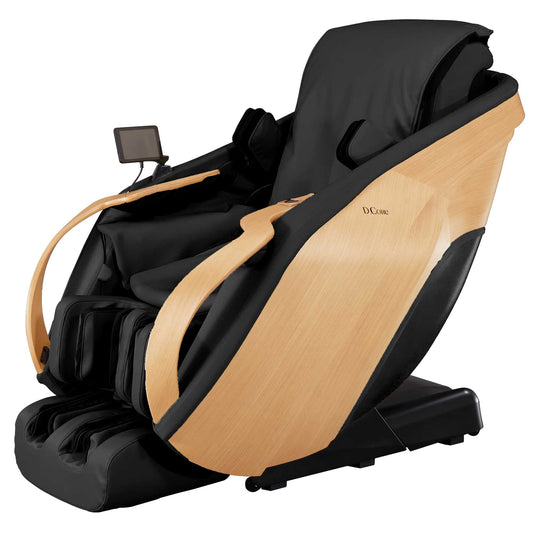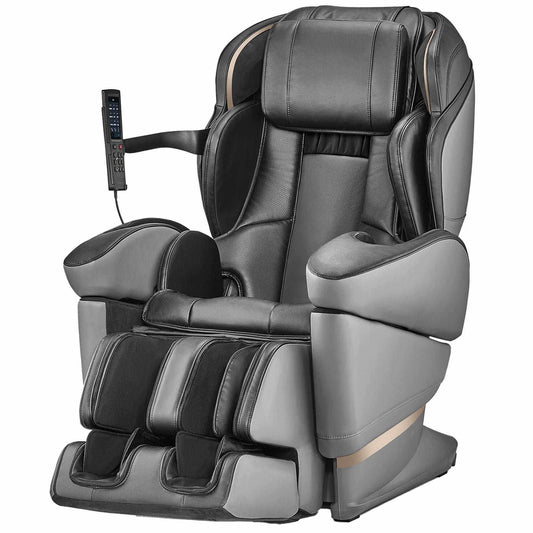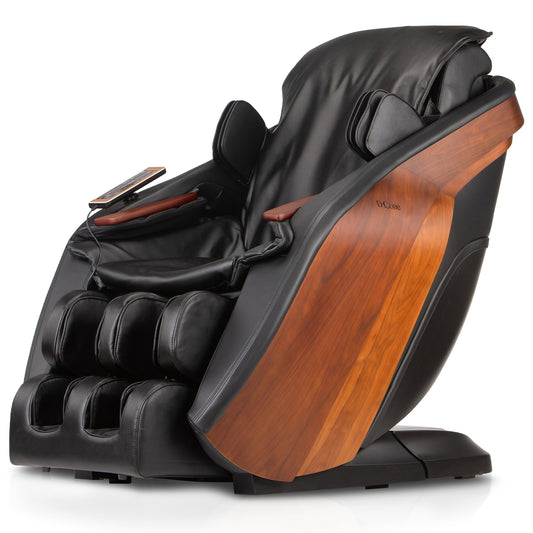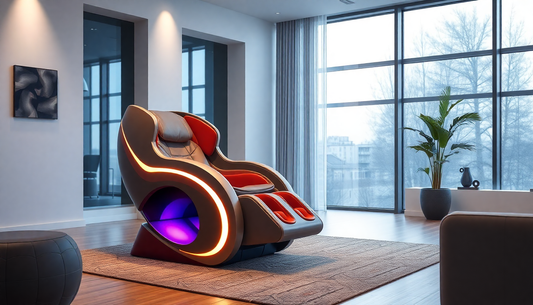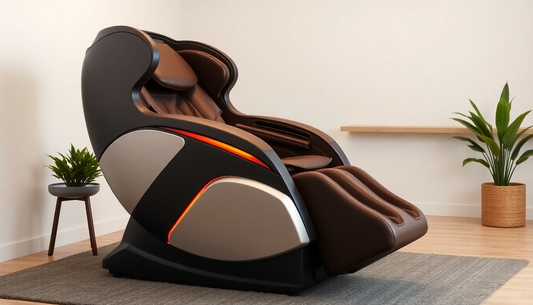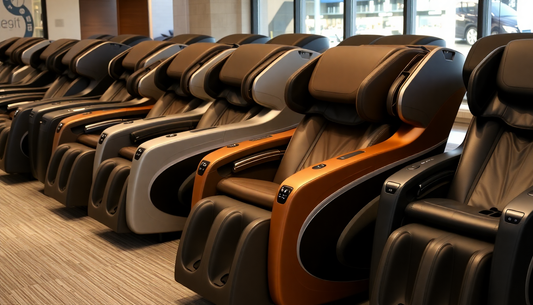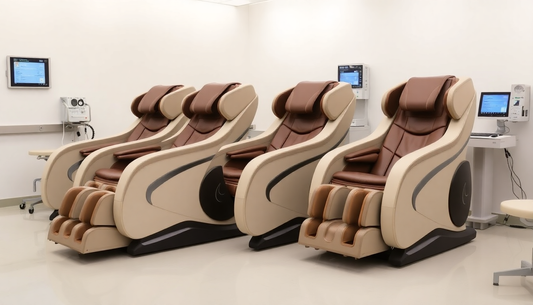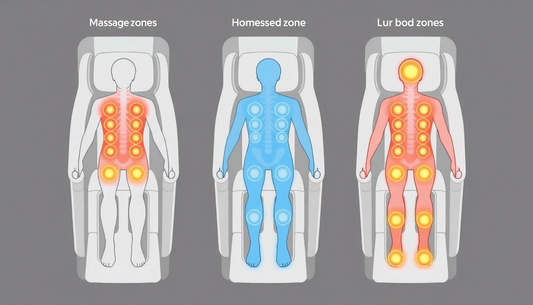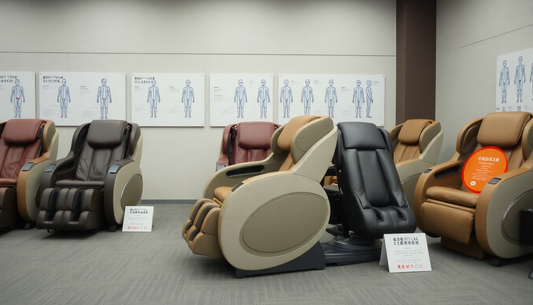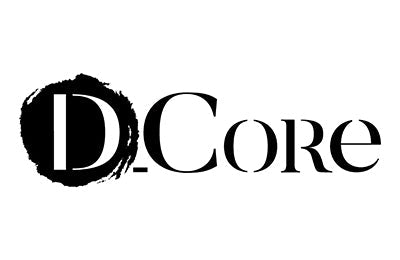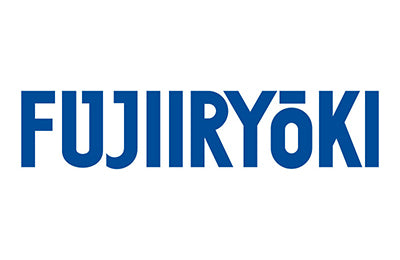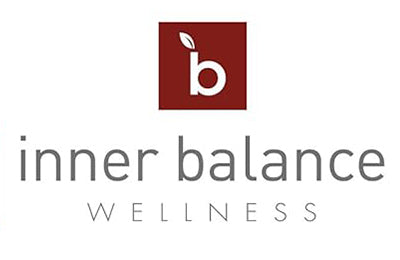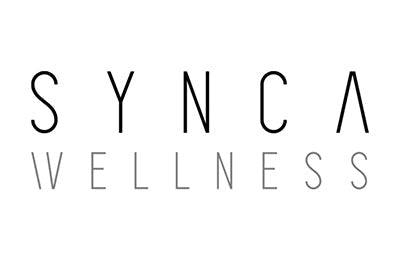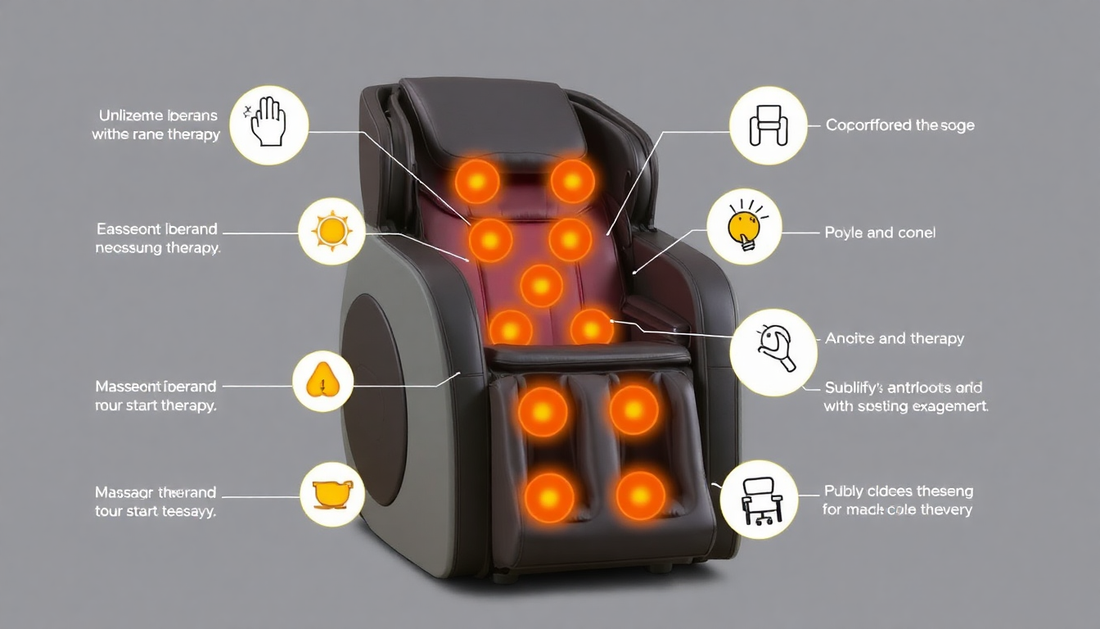
Day-by-Day Fujiiryoki Presentation: Calm Plus, Cyber Relax AI, Pro & Elite — Massage Techniques, Target Zones (Ankle to Head) & Health Benefits
Executive Summary
This expanded, day-by-day Fujiiryoki presentation is designed for presenters, retailers, wellness professionals, and informed buyers who want a deep, SEO-optimized guide to the Calm Plus, Cyber Relax AI, Cyber Relax Pro, and Cyber Relax Elite models. Each day focuses on one model, including step-by-step session plans, technique-to-zone mapping, measurable health benefits, safety notes, troubleshooting, and presentation tips to maximize audience engagement and conversion.
Why a Four-Day, Model-by-Model Approach Works
- Gradual user education: users can compare and adapt to intensity and features progressively.
- Improved retention: attendees who feel and learn on separate days better absorb differences between Swedish, Shiatsu, Deep Tissue, and AI-driven programs.
- Optimized positioning: shows the Fujiiryoki product family breadth — from comfort-first to performance-first models.
SEO Guidance and Keywords to Prioritize
- Fujiiryoki massage chair
- Calm Plus massage chair
- Cyber Relax AI review
- Cyber Relax Pro deep tissue massage chair
- Cyber Relax Elite full-body massage
- massage techniques Swedish Shiatsu acupressure
- target zones ankle to head massage chair
- massage chair benefits pain relief circulation recovery
Preparation for Presenters
- Set a four-day timetable and promote a “try-before-you-buy” series or workshop.
- Create a printed or digital one-page summary for each model: settings, target zones, and recommended session lengths.
- Prepare demo volunteers, consent forms (for comfort and medical disclosure), and a quick intake checklist (injuries, pregnancy, implants, recent surgery).
- Have towels, water, and pre/post-session stretching sheets ready.
Day 1 — Calm Plus: The Comfort & Introductory Day
Position Calm Plus as the ideal introduction to Fujiiryoki for new users, seniors, or anyone looking for daily relaxation and circulation benefits. Focus on safety, low-intensity Swedish/Kneading fundamentals, and full-body relaxation from ankles to head.
Model Highlights
- Design: user-friendly controls, gentle rollers, and broad knee-to-neck coverage.
- Best for: first-time users, stress relief, light tension, circulation maintenance.
- Session time: 15–30 minutes. Frequency: daily or every other day for beginners.
Detailed Calm Plus Session Plan (30 Minutes)
- 0–3 minutes: Settling and breathing — recline, set low intensity, guide deep diaphragmatic breathing to prime the parasympathetic response.
- 3–10 minutes: Lower body focus — Swedish strokes and light kneading on calves, ankles, heels, and feet. Use reflexology rollers at low intensity for feet to stimulate circulation and relieve plantar tension.
- 10–18 minutes: Mid body — slow long strokes along thighs and over hips to move lymphatic fluid, followed by broad lumbar Swedish strokes to reduce stiffness.
- 18–26 minutes: Upper body — gentle shoulder and neck kneading, low-intensity Shiatsu nods at mid-neck for relaxation, and light hand/wrist compression cycles.
- 26–30 minutes: Cool-down — lower intensity full-body glide and light head vibration to calm the nervous system before standing.
Technique-to-Zone Mapping for Calm Plus
- Ankle & Heel: slow rollers and compression to promote venous return and reduce mild swelling.
- Calf & Thigh: gentle kneading to ease tightness and prevent cramps.
- Feet: reflexology-focused rollers for comfort and relaxation.
- Knee: indirect support and surrounding soft-tissue kneading to reduce stiffness.
- Lower Back & Spine: Swedish strokes to reduce tension and promote spinal comfort.
- Shoulder & Neck: low-pressure kneading for tension release and posture awareness.
- Hands & Wrist: light rotational kneading for dexterity and relaxation.
- Head: subtle vibration or air pressure to promote calm and prepare for sleep.
Calm Plus Benefits and Signals to Track
- Immediate: perceived stress reduction, decreased muscle tightness, improved mood.
- Short-term (weeks): improved sleep onset, reduced minor aches from daily activity, better circulation and decreased lower limb swelling.
- Track: user-reported sleep quality, morning stiffness, and daily energy levels.
Calm Plus Presentation Tips
- Lead with a short breathing exercise and explain how Swedish strokes support parasympathetic activation.
- Invite attendees to trial foot and calf programs; highlight reflexology rollers and heel support.
- Emphasize safety: for people with varicose veins or deep vein thrombosis risk, advise medical clearance.
Day 2 — Cyber Relax AI: Smart Personalization & Adaptive Therapy
Cyber Relax AI is where Fujiiryoki's sensor-driven customization shines. This day demonstrates how AI mapping and adaptive intensity provide targeted therapy across the full body with minimum user configuration.
Model Highlights
- Design: posture mapping, pressure sensors, and adaptive program selection.
- Best for: users who want personalized sessions, those with asymmetrical tension or postural concerns.
- Session time: 25–35 minutes. Frequency: 3–5 times per week recommended for therapeutic benefit.
AI Session Breakdown & Demonstration Script
- 0–2 minutes: Posture scan — show the AI scanning process and explain how it records spinal curvature and pressure points for a customized program.
- 2–8 minutes: Foot-to-ankle calibration — AI adjusts rollers and airbags to the arch, heel, and ankle size to ensure comfortable heel and plantar pressure.
- 8–20 minutes: Dynamic upper-lower coordination — AI alternates techniques (Shiatsu, Acupressure, Kneading) in response to sensor input, focusing on detected tight regions like lumbar asymmetry or elevated shoulder tension.
- 20–30 minutes: Refinement — AI introduces targeted hold-and-release sequences on trigger points, followed by full-body Swedish glides to rebalance the nervous system.
Technique-to-Zone Mapping for Cyber Relax AI
- Ankle & Heel: adaptive rollers for targeted plantar therapy and heel pressure modulation.
- Calf & Thigh: alternating compression and kneading to flush lactic acid and reduce cramping.
- Feet & Reflex Zones: mapped reflexology to support organ-system relaxation and circulation.
- Knee & Legs: peripheral compression cycles that don't apply direct pressure to the joint; focus is soft-tissue support.
- Back & Spine: sensor-informed roller paths tailored to lumbar curvature to promote spine alignment and reduce focal pressure points.
- Shoulder & Neck: AI targets asymmetric traps and high-tone regions with localized shiatsu and acupressure.
- Head: optional vibration and light compression after deep work for nervous system recovery.
Benefits Emphasized by AI
- Personalized Pain Relief — AI targets the user’s specific trigger points and asymmetries.
- Improved Posture & Spine Alignment — intelligent roller mapping supports daily posture correction.
- Optimized Injury Recovery Support — adaptive programs reduce overload on compromised tissues while promoting circulation.
- Enhanced Efficiency — delivers targeted technique mixes (Shiatsu + Acupressure + Kneading) optimized for measurable outcomes.
Cyber Relax AI Presentation Tips
- Run side-by-side demos: AI auto program vs a manual preset on the same volunteer to show difference in comfort and focus.
- Use anonymized case examples: desk worker with neck asymmetry, runner with calf tightness, or parent with plantar discomfort.
- Explain how sensor data can be used to create recommended weekly schedules and targeted maintenance sessions.
Day 3 — Cyber Relax Pro: Deep Tissue, Trigger Points & Recovery
Cyber Relax Pro is designed for therapeutic intensity — athletes, manual workers, and chronic pain sufferers will benefit from deeper techniques and precision trigger-point algorithms. This day should stress technique safety and post-session care.
Model Highlights
- Design: stronger rollers, targeted pressure mapping, and deeper kneading and compression options.
- Best for: chronic tension, athletic recovery, scar tissue management (with clinician guidance).
- Session time: 15–40 minutes depending on tolerance; start with shorter sessions for new deep-work users.
Pro Session: Deep Work Protocol (30 Minutes Example)
- 0–3 minutes: Warm-up — low-intensity kneading and light air compression to increase blood flow and reduce risk of soreness.
- 3–12 minutes: Lower body deep work — focused deep-tissue kneading for calves and hamstrings, gradual increase in intensity to release adhesions.
- 12–22 minutes: Mid-back and lumbar — deliberate deep roller passes and trigger-point holds on areas of chronic stiffness; encourage slow breathing with holds to reduce guarding.
- 22–28 minutes: Neck and shoulders — targeted trigger point release for upper traps and suboccipital tension, caution with intensity near cervical spine.
- 28–30 minutes: Recovery — gentle Swedish glides and light vibration to normalize tissue tone and calm the nervous system.
Technique-to-Zone Mapping for Cyber Relax Pro
- Ankle & Heel: firmer foot rollers for plantar fascia and heel spur relief when indicated.
- Calf & Thigh: deep longitudinal strokes to break up adhesions and improve muscle length-tension relationships.
- Knee & Surrounding Muscles: targeted work on quadriceps and hamstrings to offload knee pain (avoid compressing the knee joint itself).
- Lower & Middle Back: deep tissue and trigger point techniques to address myofascial pain and chronic stiffness.
- Shoulders & Neck: trigger point compression and sustained Shiatsu-style holds to reduce chronic headaches and upper back pain.
- Head: short light vibration and decompression only after deeper work to avoid lightheadedness.
Pro Benefits & Post-Session Care
- Benefits: accelerated recovery, improved tissue elasticity, reduced chronic trigger-point sensitivity, and better flexibility.
- Post-Session Care: recommend hydration, a 10–15 minute gentle stretching routine, and, if needed, a warm compress for soreness. Warn users that 24–48 hours of mild soreness can be normal after intense sessions.
- Contraindications: avoid deep therapy if recent fractures, active inflammation (infection), blood-clotting disorders, or uncontrolled hypertension are present. Always encourage medical clearance when appropriate.
Pro Presentation Tips
- Before a deep demo, obtain consent and review contraindications with the volunteer.
- Offer a shortened trial for first-timers (10–12 minutes) so they can gauge tolerance to deeper techniques.
- Highlight athlete presets and explain the difference between pre-event (activation) and post-event (recovery) programs.
Day 4 — Cyber Relax Elite: Integrated Whole-Body Masterclass
On day four, showcase the flagship Elite as a culmination of comfort, personalization, and therapeutic depth. The Elite is positioned for users who want everything — advanced shiatsu, precise trigger points, comprehensive reflexology, and spinal alignment support.
Model Highlights
- Design: most advanced roller technology, full-body airbags, multi-zone control, and extensive program library.
- Best for: experienced users, people seeking a single chair that serves relaxation, corrective posture therapy, and deep recovery.
- Session time: 30–45 minutes for a full integrated session.
Elite Full-Body Integrated Session (45 Minutes)
- 0–5 minutes: Intake, posture check, and warm-up — begin with breathing and low-intensity full-body glide.
- 5–15 minutes: Feet-to-knee orchestration — advanced reflexology, heel decompression, calf kneading, and dynamic compression sequences to prime circulation.
- 15–30 minutes: Spine and torso mastery — alternating Shiatsu, acupressure, and deep tissue segments tailored to the user’s spinal curvature and trigger points; include thoracic decompression and lumbar precision work.
- 30–40 minutes: Shoulder, neck, and head — layered trigger point release, suboccipital decompression, and light head vibration to relieve tension-type headaches.
- 40–45 minutes: Whole-body cool-down — synchronized air compression and Swedish glide to rebalance the nervous system and facilitate recovery.
Technique-to-Zone Mapping for Cyber Relax Elite
- Whole Body: coordinated workflows move attention from ankles to head, leveraging reflexology, acupressure, shiatsu, and deep tissue where indicated.
- Hands & Wrist: advanced ergonomic support and kneading to relieve repetitive strain and improve circulation in the hands.
- Shoulder & Neck: multi-angle trigger point release and micro-adjustment intensity for cervical comfort without excessive force.
- Spine & Postural Correction: precision roller tracks designed to encourage spinal alignment and reduce chronic postural strain.
Elite Benefits & Long-Term Outcomes
- Comprehensive Pain Relief — integrated modalities reduce chronic musculoskeletal pain more effectively than single-technique sessions.
- Improved Sleep & Stress Control — whole-body programming improves parasympathetic activation and sleep quality long-term.
- Posture & Mobility Gains — consistent use can support meaningful improvements in posture and daily mobility.
- Chronic Condition Support — when combined with clinical guidance, the Elite can be part of a long-term rehab or maintenance plan for conditions like chronic low-back pain or persistent myofascial pain syndrome.
Cross-Model Comparison & When to Recommend Each
- Calm Plus: recommend for casual users, seniors, and those new to massage chairs who value everyday comfort and mild circulation support.
- Cyber Relax AI: recommend for posture correction, tech-savvy users who prefer personalized programming, and people with asymmetrical pain patterns.
- Cyber Relax Pro: recommend for athletes, manual laborers, or chronic pain sufferers who need deeper, targeted tissue work.
- Cyber Relax Elite: recommend for committed users who want a single chair that covers relaxation, therapy, and advanced corrective routines.
Safety, Contraindications & Best-Practice Guidelines
- Always advise medical clearance for: pregnancy, implanted medical devices (e.g., pacemakers), recent surgery, deep vein thrombosis, severe osteoporosis, uncontrolled high blood pressure, and active cancer treatments unless cleared.
- For deep-tissue sessions: recommend shorter duration for first session and schedule follow-ups on alternate days to monitor soreness and recovery.
- Hydration: encourage water intake before and after sessions to assist metabolic clearance and reduce soreness.
- Temperature & Clothing: avoid overly warm rooms for deep work; light comfortable clothing recommended for hygiene and comfort.
Maintenance & Troubleshooting for Presenters and Owners
- Daily: wipe surfaces and control panels with soft cloths; inspect safety straps and moving parts visually before demos.
- Weekly: vacuum or clean foot wells and crevices to prevent debris buildup. Check for loose screws or wear on upholstery seams.
- Monthly: test all programs and sensors; run diagnostics if the chair supports them. Document firmware versions and perform OEM updates when available.
- Troubleshooting common issues: weak rollers (check power supply and recalibrate), airbag inflation delays (inspect air lines), uneven pressure (run self-calibration or sensor re-scan).
Complementary Practices to Maximize Benefits
- Daily mobility routine: 10 minutes of dynamic stretching after chair sessions to consolidate flexibility gains.
- Strength work: low-load strength training twice weekly to support musculoskeletal health and reduce re-injury risk.
- Mindfulness or breathing practice: 5–10 minutes during or after sessions to deepen stress-relief benefits.
- Heat and cold protocols: use heat before deep sessions to warm tissues; cold can be used after intense sessions if inflammation is present.
Measuring Outcomes: What to Track
- Pain scores: simple 1–10 rating before and after sessions for key areas (neck, lower back, calf).
- Mobility metrics: sit-and-reach, shoulder range-of-motion, timed up-and-go for older users.
- Sleep quality: track minutes to fall asleep and number of night wakings over 2–4 week intervals.
- Subjective wellbeing: stress, fatigue, and energy ratings logged weekly.
Expanded FAQs (Detailed Answers for Presenters)
- Q: How quickly will I see results? A: Relaxation and improved circulation are often immediate. Meaningful pain relief or mobility changes typically appear after 2–6 weeks of consistent, targeted sessions depending on condition severity.
- Q: Are massage chairs safe for older adults? A: Yes, particularly models like Calm Plus. Set intensity low, monitor for orthostatic hypotension, and clear with a clinician if there are cardiac conditions or implanted devices.
- Q: Can massage chairs replace manual therapy? A: They’re complementary. Massage chairs extend access to regular therapy and maintenance but should be used alongside clinical care for acute injuries or complex conditions.
- Q: How do I choose between Pro and Elite? A: Choose Pro if your priority is deep recovery and focused trigger-point work. Choose Elite if you want the broadest feature set for both therapeutic and restorative uses in one investment.
- Q: What is the best frequency for chronic pain? A: Many users benefit from 3–5 sessions per week initially, tapering to 1–3 times per week as symptoms stabilize. Tailor frequency to response and tolerance.
Sample Presentation Flow & Slides Outline
- Slide 1 — Welcome & Workshop Agenda: introduce the four-day flow and goals.
- Slide 2 — Why Fujiiryoki?: brand history, approach to ergonomics and therapy (brief).
- Slide 3 — Technique Primer: Swedish, Deep Tissue, Trigger Point, Acupressure, Shiatsu, Reflexology, Kneading — what they do and when to use them.
- Slide 4 — Day-by-Day Model Snapshot: Calm Plus, Cyber Relax AI, Pro, Elite.
- Slide 5–8 — Live Demo Scripts for Each Model (step-by-step times and settings).
- Slide 9 — Safety & Contraindications.
- Slide 10 — Takeaway: one-page cheat sheets, scheduling recommendations, and Q&A.
Two Example Case Studies to Showcase During Presentation
- Case Study A — Office Worker with Chronic Neck & Upper Back Tension: Use Cyber Relax AI to map asymmetry, target upper traps with Shiatsu and trigger-point holds, and schedule 20-minute daily sessions for 4 weeks. Expected outcome: decreased headache frequency and improved cervical ROM.
- Case Study B — Recreational Runner with Tight Calves and Plantar Discomfort: Start with Calm Plus for baseline circulation and reflexology, progress to Cyber Relax Pro for deep calf release post-runs, and use Elite weekly for integrated recovery. Expected outcome: reduced calf tightness, fewer cramps, and improved stride comfort.
Closing Recommendations
- Structure demos to move from comfort (Calm Plus) to personalization (Cyber Relax AI) to depth (Pro) and finally to integrated mastery (Elite).
- Use measurable outcomes and short-term goals to turn interest into purchase decisions: e.g., 2-week pain score reduction challenge.
- Provide resource handouts — quick-start guides, contraindication checklists, and post-session care tips — to reduce buyer hesitation.
Final Call-to-Action for Presenters
- Host multi-day demo series and collect user feedback to iterate presentation flow.
- Offer trial periods or satisfaction guarantees where possible to lower purchase friction.
- Maintain a safety-first approach and direct customers with clinical conditions to appropriate medical professionals while explaining how Fujiiryoki chairs can support ongoing care.
Appendix: Quick Reference — Techniques, Target Zones & Primary Benefits
- Swedish Massage — zones: whole body; benefits: stress relief, blood flow control, mild flexibility gains.
- Deep Tissue — zones: back, thighs, calves; benefits: tissue therapy, injury recovery support, pain relief.
- Trigger Point — zones: shoulders, neck, lumbar areas; benefits: pain relief, muscle therapy.
- Acupressure — zones: spine, shoulders, feet; benefits: targeted pain control, improved circulation.
- Shiatsu — zones: back, neck, shoulders; benefits: spine alignment support, stress relief.
- Reflexology — zones: feet, heel; benefits: circulation, fatigue relief, systemic relaxation.
- Kneading — zones: calves, thighs, shoulders; benefits: flexibility improvement, muscle therapy, blood flow control.
Notes on Evidence and Professional Use
Clinical and observational research over the past decades supports the role of massage techniques in improving circulation, reducing perceived pain and stress, and improving short-term flexibility and mobility. For therapeutic claims related to specific medical conditions, pair Fujiiryoki use with clinician-directed care and use outcome tracking to document improvement over time.
Contact & Resources for Presenters
- Prepare an FAQ sheet tailored to local regulations and medical referral pathways.
- Create feedback forms to collect user tolerance, perceived benefits, and willingness to purchase after each demo.
- Offer contact information for service, firmware updates, and warranty claims to reassure buyers.
Closing Thought
When presented thoughtfully, Fujiiryoki’s Calm Plus, Cyber Relax AI, Cyber Relax Pro, and Cyber Relax Elite models offer a progressive path from daily comfort to full therapeutic capability. A structured four-day demonstration program equips users to choose the right model for their needs and empowers presenters to show measurable outcomes, safety practices, and lifestyle integrations that turn demos into satisfied long-term users.
